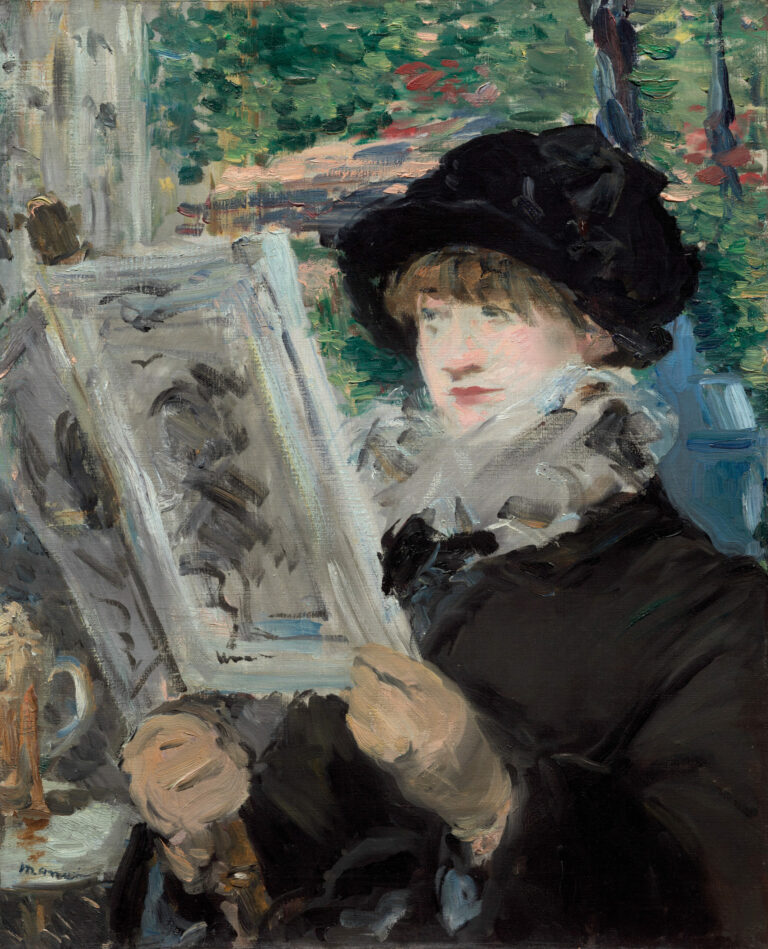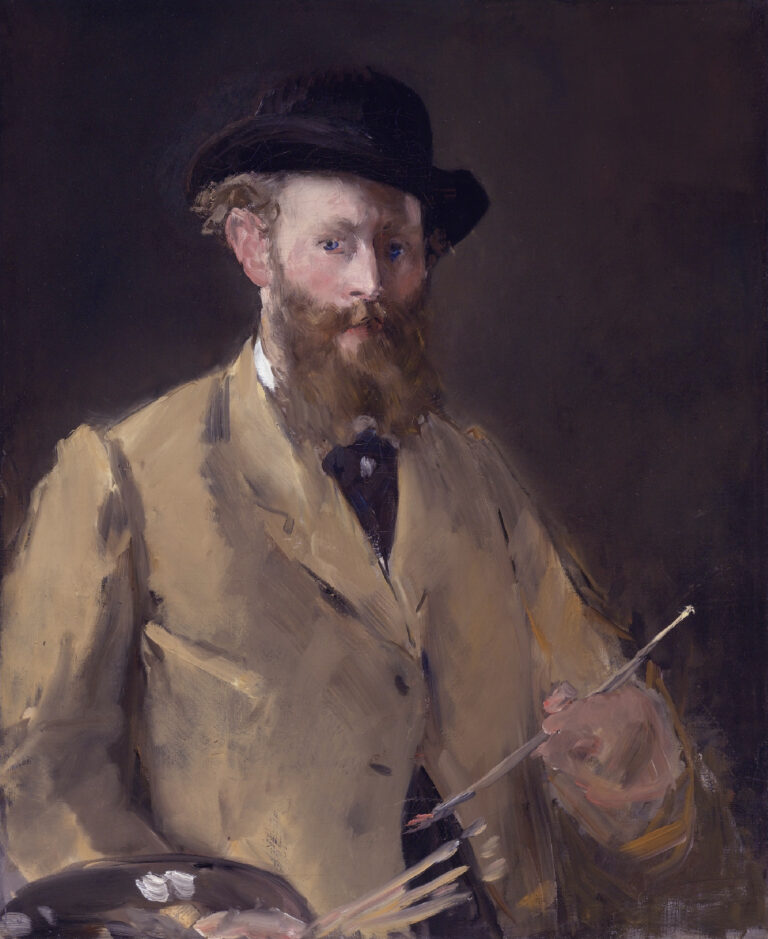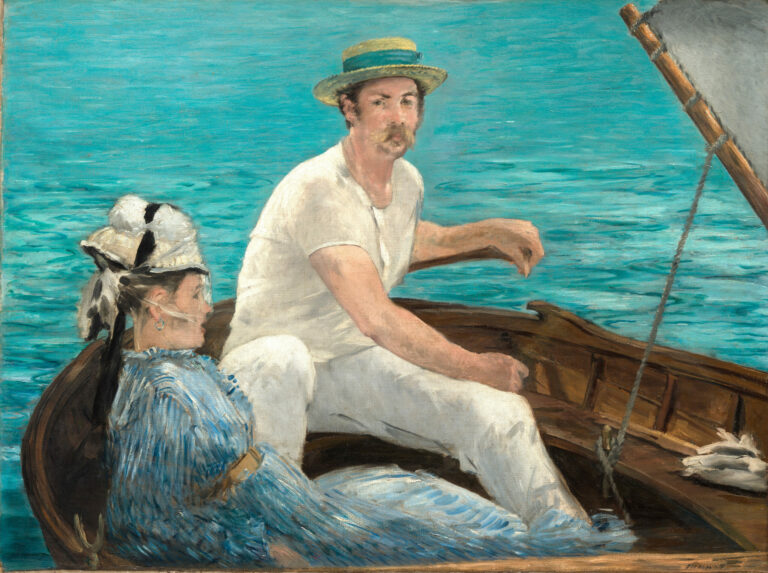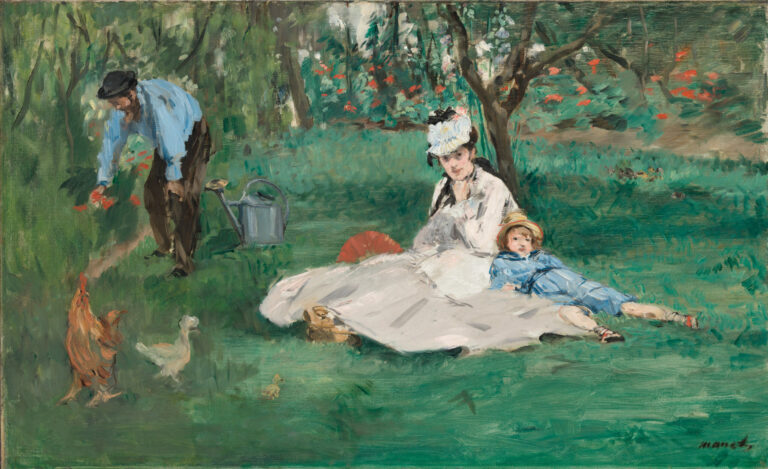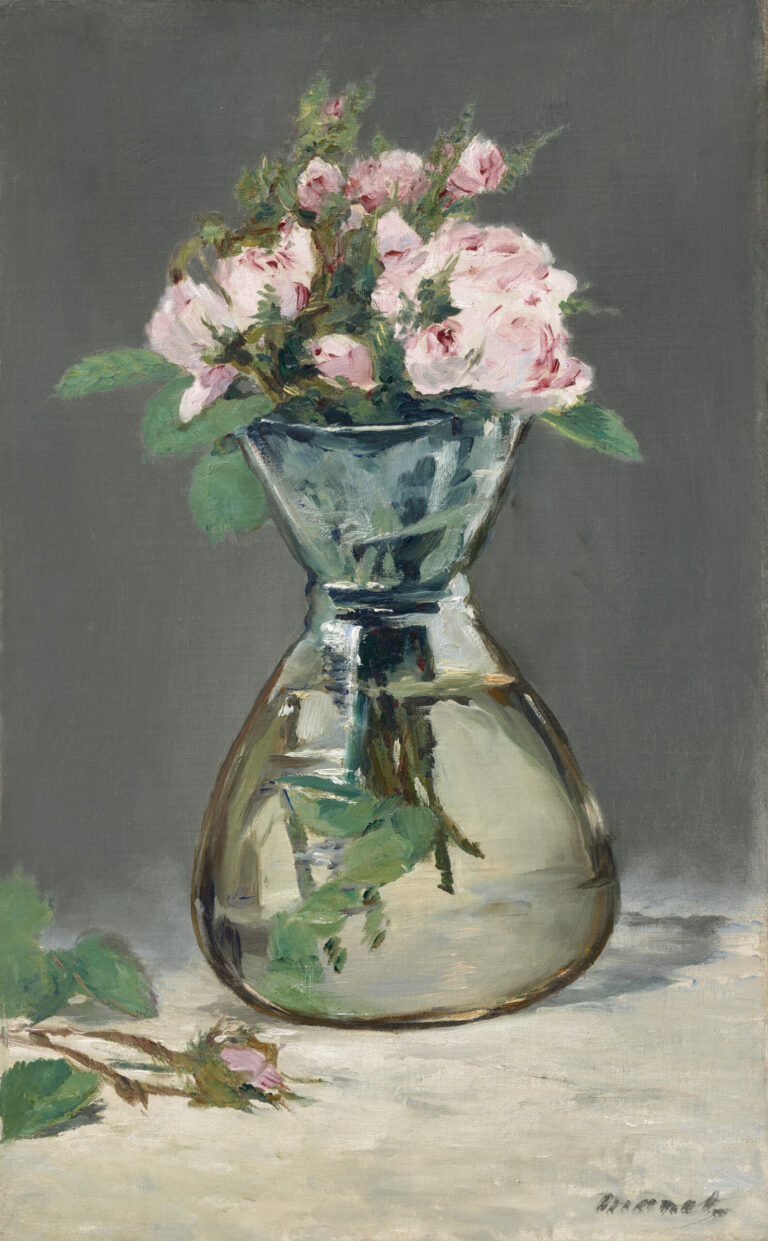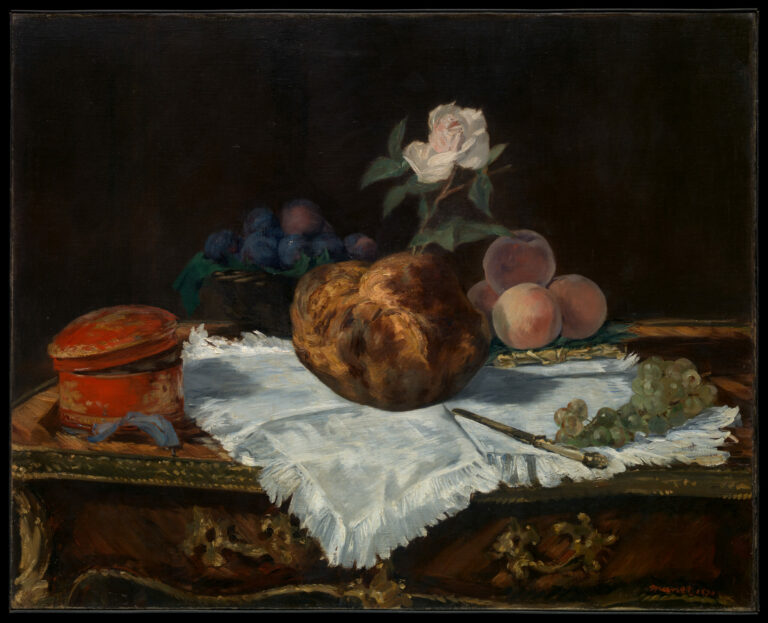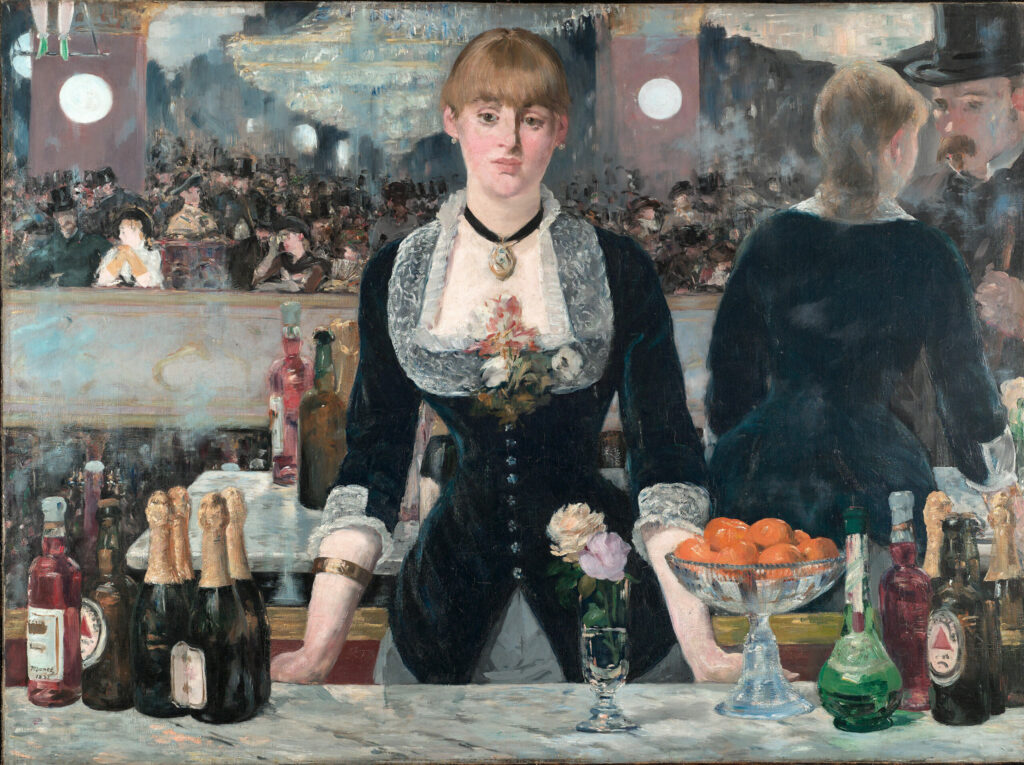
A Bar at the Folies-Bergère: A Visual Symphony of Parisian Modernity. Manet’s final masterpiece immerses us in the nocturnal effervescence of the Folies-Bergère.
An enigmatic barmaid, Suzon, stands motionless before us—a silent sentinel in a world of perpetual motion. Behind her, a monumental mirror multiplies space and subverts the codes of perception.
The deliberately unsettling composition challenges our bearings: displaced reflections, misaligned bottles, all contributing to a disorienting visual choreography that defies traditional perspective. Sparkling lights, champagne awaiting service, elegant silhouettes moving in the background, even the green legs of a trapeze artist—everything evokes the whirlwind of modern Parisian life. Manet captures a world in transition, suspended between appearance and reality, superficiality and melancholy.
Essential Information
- A Bar at the Folies-Bergère by Édouard Manet, 1882
- Oil on canvas, 96 × 130 cm
- The Courtauld, London (Samuel Courtauld Trust)
- https://gallerycollections.courtauld.ac.uk/object-p-1934-sc-234
About the Artist Édouard Manet (1832-1883) embodied the revolutionary painter who navigated his era’s artistic currents while preserving a singular vision. Breaking from dominant academicism, he explored contemporary themes through innovative pictorial techniques. While Le Déjeuner sur l’herbe and Olympia provoked resounding scandals, they heralded painting’s liberation from convention.
Influenced by Velázquez and Goya, admired by the Impressionists whom he inspired without officially joining their movement, Manet developed a body of work combining incisive observation of reality with freedom of execution. Constantly seeking renewal, he died prematurely at 51, leaving A Bar at the Folies-Bergère as the artistic testament of a modernity he so brilliantly interpreted.

